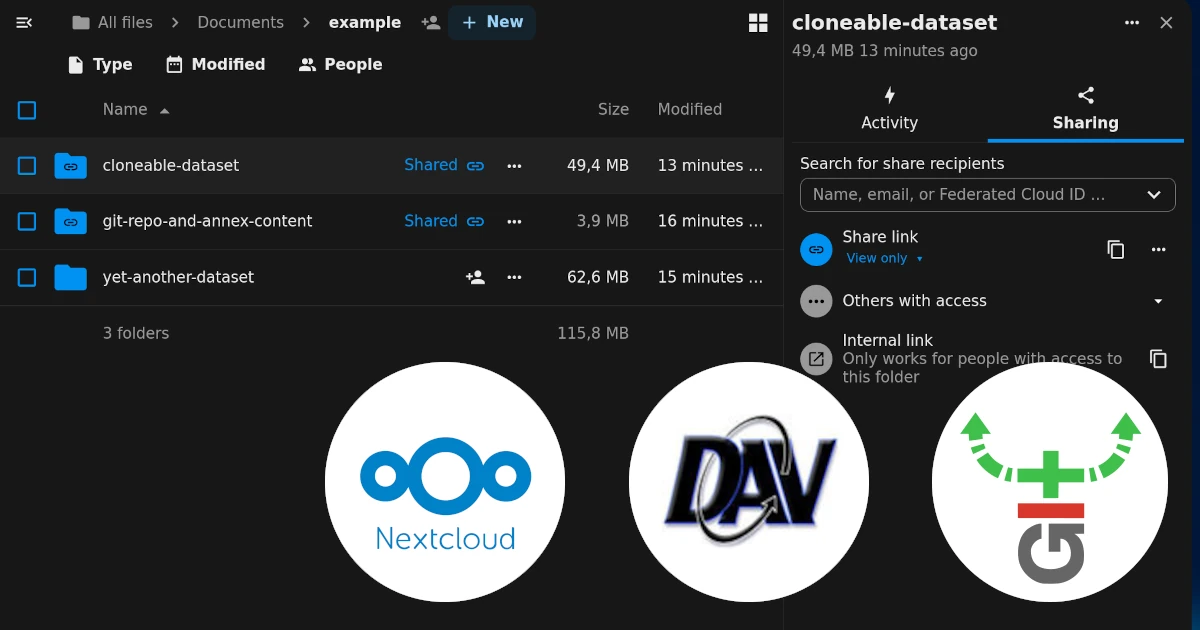
Putting new git-annex features to use with Nextcloud
Git-annex continues to evolve. In this post, I want to look at two changes, one big and one small, introduced within the last year. Together, they make publishing files through Nextcloud much nicer. Specifically, it is now possible for a read-only shared Nextcloud folder to be a one-stop shop for cloning the dataset and getting file contents. This can be a useful setup for sharing (research) data: having the shared folder be a single point of access is convenient, and restricting write access is necessary to prevent unauthorized changes....



